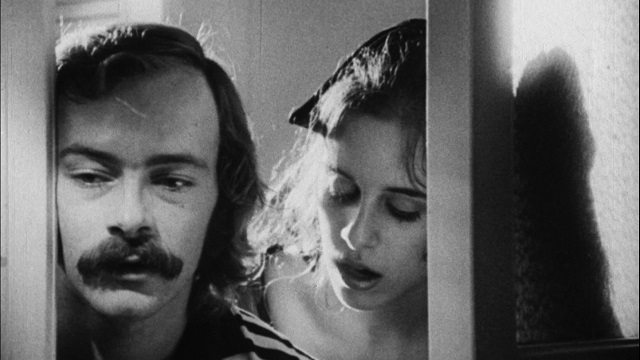Underground cinema of the 1960s and 1970s was created in a culture that favored personal expression over spit and shine polish. In attempts to find new ways to express the new look on the world, many filmmakers developed new formalist and narrative techniques that would later influence the higher budget films coming out of “New Hollywood.” If one could argue that the New Hollywood era rewarded independent spirit over formulaic output, the underground cinema of the era rewarded uncommon viewpoints expressed in unusual methods.
San Francisco gives birth to a specific flavor of genuine lunacy. Art that comes out of San Francisco has a commitment to naturalistic spirituality, an unabashedly free view of sexuality in all of its incarnations, an allowance of intent and purpose over skill or pretension, and an almost childlike acceptance of all viewpoints and all of the neuroses that involves. Curt McDowell, director of Thundercrack!, made movies that explored his sexuality, his ideal utopia of a freely sexual society, while also exploring cultural hang-ups that also influenced his own negative emotions. Some of his earlier works ranged from sexually explicit confessions to a giggly montage of hardcore pornographic images accompanying naughty words.
In San Francisco, McDowell became involved with George Kuchar, an older man from the Bronx who had been making movies that used old Hollywood tropes to explore his own melodramatics and neuroses. If McDowell’s films were attempts to break free of his prison, Kuchar’s films were distortions that, in a modern milieu, almost look like early works of drag culture. John Waters shows up in the documentary It Came From Kuchar to list them as direct influences on his movies, and it shows.
Thundercrack! is a Frankenstein’s Monster of these two aesthetics. The premise is an Old Hollywood formula stripped back to its basics: on a dark and stormy night, a motley group of travelers find themselves taking refuge in a house run by a weird and tragic owner with secrets to hide; hijinks ensue. Mrs. Gert Hammond, owner of the Prairie Blossom Estate, is a lonely widow who finds solace in alcohol when a series of stranded visitors descend on her doorstep. The visitors include a hitchhiker, an unsatisfied conservative wife, young antagonistic women, possibly queer men, a circus trainer, and a sex-crazed homicidal gorilla. All of these people have secrets to reveal, and issues to sort out by the time the clouds part and the sun rises.
Released the same year as Rocky Horror Picture Show, Thundercrack! presents a far more cracked and neurotic view of the Old Dark House formula. The twin voices of McDowell and Kuchar dish out absurdity, pathos, comedy, horror, and hardcore sexuality in equal portions. One may wonder if a pornographic movie was invaded by an art film, or if an art film was invaded by a pornographic film, even as either side of the equation is dancing with the other. But, the main difference between Thundercrack! and Rocky Horror Picture Show is that Richard O’Brien viewed free sexuality as the marker setting people apart from the norm, while McDowell envisioned a world where everybody has the potential to be sexually free without boundaries holding them back.
Make no mistake, Thundercrack! is a gleefully insane film. Everybody has to bare their soul (along the with their body), and each secret is more insane than the last. At 160 minutes, there’s a lot of time for a lot of secrets, culminating in an exhaustingly gonzo experience. I recommend making good use of the newly replaced Intermission to take a break and regather yourself for part 2.
For its 40th anniversary Synapse Films released a restoration made from the only complete 16mm print in existence. The negative has been long lost, and 4 of the 5 prints were cut to ribbons by the distributor. Fortunately, Synapse took their time and really restored the image, delivering a sharp solid image that restores the cinematography to its full majesty. The influence of the noirs and horrors of yore are now able to shine through the shadows instead of being resorted to a murky dark image in previous editions. In addition to that, the sound is restored, and now has subtitles in case the dialogue was a bit murky from the low-budget recording techniques. Despite the image above being cropped by yours truly for website purposes, the image is presented in its original 1.33:1 ratio.
Exclusive to the 2-disc blu-ray, Synapse includes the SXSW documentary It Came From Kuchar, a handful of short films from Curt McDowell, unearthed interviews with Curt and a handful of new reflections from the surviving artists.


